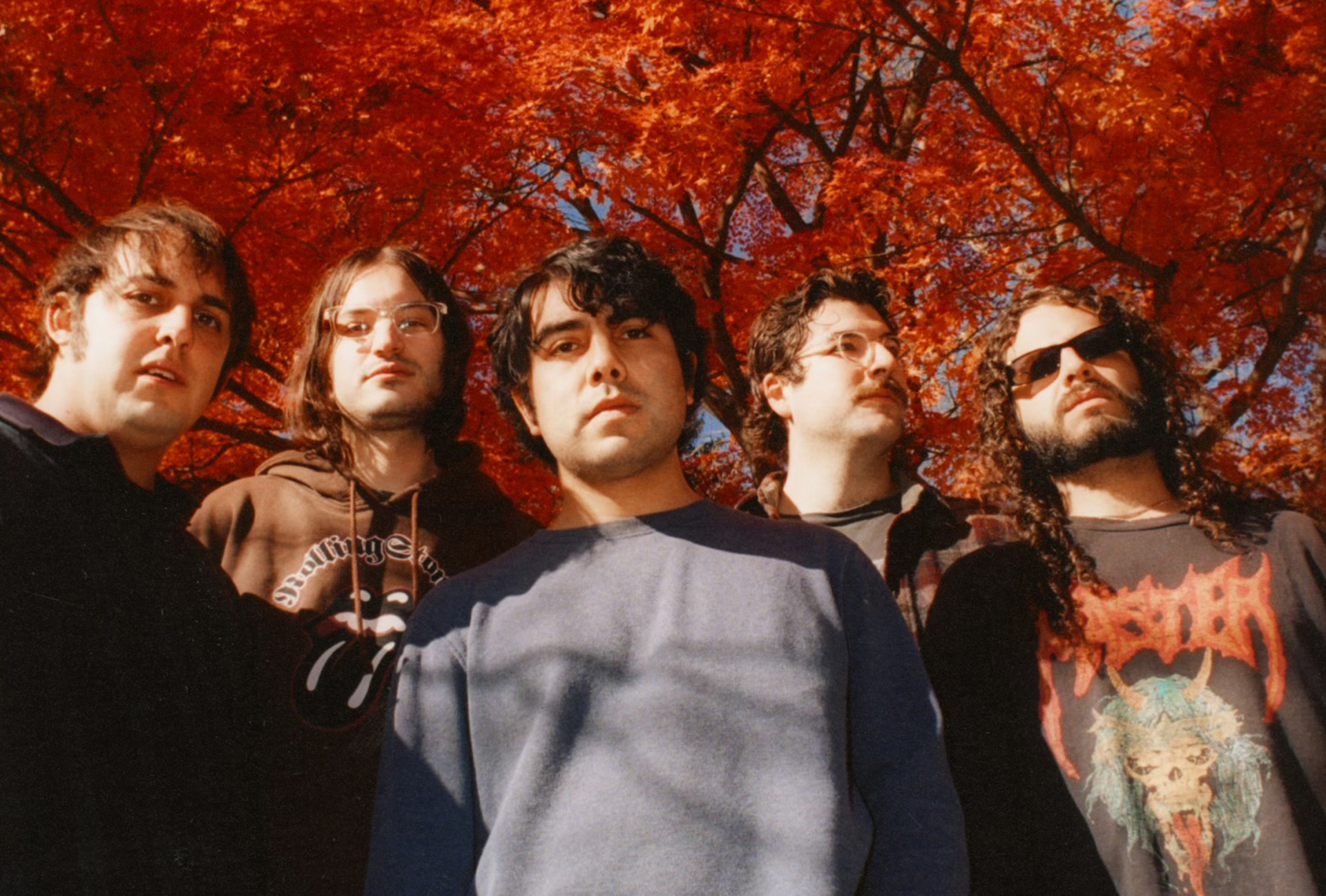
Silicon and Steel #1: Horror Game "S.T.A.L.K.E.R." Meets Yellow Eyes

Silicon and Steel takes a look at pairings of horror-themed video games and the metal music that evokes the same terror, dissecting how they make us feel the way we do and how pixels on a screen can conjure thoughts of long-forgotten riffs — or vice versa.
Immersion is a hell of a drug right now. Medium notwithstanding, anything that can whisk me away from the ever-growing heap of anxieties that is 2020 earns itself a dedicated spot in my desert island/pandemic survival bunker stash.
For whatever reason, film has never been my go-to comfort; instead, video games and music, albeit of wildly contrasting moods, leech away my concerns and whittle the hours away. When it comes to games, I’m a bit of a masochist: survival horror, military simulations, etc., and the more terrifying and/or excruciating they are, the more effectively they draw me into their worlds. On the other hand, I don’t always find myself gravitating toward intricate, enveloping atmospheric metal (gimme that dumb, vivacious energy instead) — there are exceptions, though, and certain albums can bathe me in the same combination of wonder and dread that getting my ass handed to me in strange lands does.
Electrifying wonderment plus dread is better than reality’s current offering of dread topped with even more dread — and so, this column is dedicated to dual dissections of bone-chilling albums and the stranger side of video game horror.
…
…
I’m starting with horror in the shape of an omnipresent, unnerving force: art oozing malaise that leaves us feeling unwelcome, but that’s alluring nonetheless. The worlds these works create are natural and alive, but not meant for us (not anymore, anyway). GSC Game World’s 2007 survival horror classic S.T.A.L.K.E.R.: Shadow of Chernobyl arguably set the bar for inhospitable digital lands that lived, breathed, and wanted to kill you. As I played it earlier this year, this sense of natural unnaturalness reminded me of an album that strides along the same path: Yellow Eyes‘ Sick with Bloom, a haunted biome rife with shrieking pathos and sublime (if poisoned) majesty.
…
…
As background, I’ve been spending more hours than healthy on the punishing looter-shooter Escape from Tarkov recently, which thematically inherits the S.T.A.L.K.E.R. series’ vision of a post-apocalyptic Eastern Europe minus all the weird mutants and radioactive anomalies. Though the core gameplay is different, diving into Escape from Tarkov immediately gave me the same vibe and reminded me of the memorable hijinks I got up to when I tried the last game in the S.T.A.L.K.E.R. series, Call of Pripyat.
Clutching a rickety Kalashnikov while attempting to excise angry mole-like mutants from a cave, walking into what I thought was an empty building only to realize it was populated with numerous, very angry invisible mutants, and dodging semi-sentient fireballs to try and nab a stat-boosting glowing rock — all memorable, but I wanted to go back even further. I decided to double-down on my nostalgia and give the first S.T.A.L.K.E.R. game a shot.
S.T.A.L.K.E.R.: Shadow of Chernobyl, its setting based roughly on a Russian novella called Roadside Picnic, puts players in the shoes of the mysterious “Marked One,” someone who’s conveniently forgotten his past, and drops us into the Chernobyl Exclusion Zone, here simply known as the Zone. In this world, Chernobyl was struck by a second disaster years later after attempts to repopulate the Zone, leaving behind massive amounts of mutation and blight. You’d think people would leave it well enough alone after that, but nope — there are strange and powerful artifacts to be found and money to be made.
Naturally, a bizarre and dangerous microcosm of civilization exists within the Zone, populated by artifact-scavenging Stalkers, marauding bandits, and multiple factions with their own agendas. Oh — and mutants. Lots of them.
…
…
When you’re walking in the Zone, it’s absolutely alien: strange beasts roam the lands, lakes and ponds shimmer with unnatural colors, and often you’ll come across pulsing hotspots in the air: venture too close and your suit’s Geiger counter will protest rapidly as shit gets weirder. Still, there’s a sense of nature and order to it all. Birds fly above the Zone, the warped creatures operate in packs, and even if they’re not the beasts we’re used to seeing, they thrive here. It’s all unreal, and probably lethal, but they’re not the threat — you are. While Shadow of Chernobyl is a survival horror game, it’s foremost a surreal venture into a world where you’re the interloper, invading a place that’s moved past humanity and come up with its own rules.
The Zone is a harsh place, requiring some investment to master, but it’s not always an outwardly scary experience. When you’re out roaming the Zone, you’re much more likely to come under attack from humans (the real monster, of course) looking to take the three sausages and vodka you’re packing than from any seriously lethal mutant. There’s always that chance, though, and there’s an ambient sort of fear that comes from it.
And it’s definitely a horror game in the conventional sense as well, too: I stepped into an underground laboratory a few hours in, ready to bash open some wooden crates in the first room to check for loot. That plan changed, however, when they all immediately launched themselves into the air (and then at my head) — I never found out why that was happening, either. Shooting anything and everything that I could find in the laboratory (including angry mutants, floating electrical sparks, etc.) wasn’t enough to stop the poltergeist’s barrage as I nope-nope-noped through the lab.
That’s one of the things that makes S.T.A.L.K.E.R.: Shadow of Chernobyl especially terrifying: sometimes you simply will not know what’s going on. Can you make it past an erratic underground lightning anomaly, or does this mean you’re going the wrong way? What’s trying to kill you this time, and why is it invisible? Far from hand-holding you through the game or providing an encyclopedia of beasts you’re likely to face, every enemy you face is instead liable to be a freshly terrifying challenge. Early on, I found myself in an underground tunnel system on my way to a military installation, and just as I was about to leave, a man-shaped mutant (later research would tell me it’s called a “Controller”) popped up behind and attempted to psychically pull my soul out of my body.
…

…
This is an interesting effect for a fairly old game to tackle, but no less capable of producing a creepy-crawly feeling as I desperately blasted at it in between spirit-tugs. As it turns out, I could have just run away, but I had no idea that was the case.
…

…
Sick with Bloom isn’t a horror-themed album, but it generates exhilarating anxiety in a way that few works dedicated to the genre can. Concept albums like King Diamond’s Abigail have theatrical thrills, and the gore-obsessed Cannibal Corpse can be uncomfortably descriptive, but neither are really truly unsettling. When you first read through Sick with Bloom‘s tracklist and lyrics, however, it’s an eerie experience — conventional words twisted by some nonlinear thought process into a new form of being you can’t understand. “What Filters Through the Copper Stain” — recognizable words, yes, but pieced together into something unknowable and alluringly bizarre.
The music, of course, bears its own mutations. Opening with crickets chirping, the core of the album is black metal that runs in familiar patterns: tremolo riffing, stately progressions, and crushing half-tempo interjections. The notes that paint these patterns, however, are faintly dissonant and often haunting, operating emotionally in an uncanny valley triangulated somewhere between triumphant, mournful, and straight-up malevolent.
Elegant throughout, Sick with Bloom transfers this mood into six songs that use their runtimes to build gilded and corrupted structures from the tried-and-true elements of the genre. Listening to it is an incursion into a different reality: one cast in amber and fashioned from crystallized pathos. Stepping into this tinted world conjures that same feeling of intrusion that S.T.A.L.K.E.R.: Shadow of Chernobyl does: it doesn’t feel like the listener belongs to this bleak, distorted world, but every step deeper is rewarded with wondrous abnormality.
Clearly Sick with Bloom didn’t catalyze an entire genre like S.T.A.L.K.E.R. did, but at least for me, it’s the definitive Yellow Eyes album and a standout accomplishment. Their inscrutable execution of black metal integrates with the concept from top to bottom seamlessly. From the title and album art to the closing acoustic melody played over clanging chimes and forest ambiance, everything drives home the aggrieved strangeness, leaving it etched into your bones.
While the album isn’t thematically an exact match with S.T.A.L.K.E.R., Sick with Bloom called to me more for its powerful sense of immersion than one-to-one conceptual alignment. Trading immersion for fun or entertainment value is often a fair trade, but sometimes the feeling of sinking into another world is entertaining in itself. It certainly makes the unknown more frightening and sentiment more lasting, and that’s what these two works accomplish emphatically.
You can wander in these two worlds for untold hours, lingering in windswept voids and toxic lakes powerfully expressed, in one case, by guitars, drums, and horrid screeches, and in the other case by laboriously-crafted (if a little dated) polygons on a screen. Whichever one suits your fancy (hopefully both), they’re as close to an escape hatch from life as you can probably get right now.
Sick with Bloom released on December 11th, 2015 via Gilead Media.
S.T.A.L.K.E.R.: Shadow of Chernobyl released on March 20th, 2007 and is available on Steam.
Support Invisible Oranges on Patreon and check out our merch.











